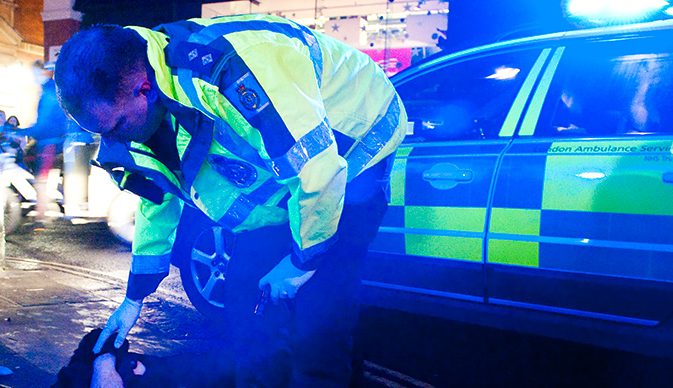Every Emergency Medical Service must provide their workers with the proper Personal Protective Equipment. Among them, the uniform is the most important. Read the test realized by the readers.
Clothes protect you from contamination, temperature, and environmental risks. But first of all, an ambulance uniform is the first step to recognize you as a paramedic, an EMT, a nurse or a doctor. The gear “literally” highlights you during an intervention. In Europe high-visibility clothing, safety footwear, helmets, gloves, eye protection glass, and respiratory equipment are included in the PPE list, that is similar in each countries tanks to the European Regulations (EN20471 – EN343 – EN471 – Eu 2016/425).
Uniforms must respect specific requests from the EN ISO 20471:2013 regulation. High-visibility clothing must indicate clearly the presence of a rescuer in any light condition, both in daylight and during the night. Colours and reflections, disposition and dimension of reflective bands are standardized. The new regulation, which everyone must respect since April 2018, impose the following sentences:
-
There is no difference between professionals or non-professionals use of high-visibility clothes or uniforms;
-
You must evaluate risks before choosing a garment or a uniform for your staff;
-
No more high visibility harnesses are admitted;
-
Logos, patches or printed name do not contribute to the high visibility area;
-
A producer must declare the maximum washing cycle for the uniform;
The regulation is more focused on safety, to force every company involved in low visibility scenarios to focus their attention on the quality of clothes and PPE. This is the reason why in the past 2 years many ambulance services changed their uniforms or some of the devices used by paramedics, EMT or First Responders. The new EN ISO 20471:2013 do specification about high visibility uniforms. The 3 class standardized review of the products has not received changes. A Class 3 garment is the better solution for an ambulance professional. You can obtain a class 3 ambulance uniform also combining two class 2 clothes.
For having a class 3 uniform, you must have:
- minimum of 0.80 M2 of fluorescent material
- minimum of 0.20 M2 of reflective material
- 4 meters of reflective bands (5m large)
I.E. you could have pants that receive only a class 2 certification, but they will become a class 3 device if combined with a class 3 jacket. Class 2 or Class 1 devices are not accepted as a correct solution for operating on roads or airports. Remembering that Class 3 devices were studied for workers in highways, airports and other similar environments. So, high visibility clothes must be worn on all roads, by water or where health and safety regulations apply. Protective clothes like plastic goggles, gloves, sleeve protectors and aprons, must be worn when you need to prevent infections (there are specific procedures in any Country).
To better explain what could be the right solution for your ambulance service, we will provide 2 short reviews about ambulance uniforms, realized by our readers Matteo Pancotti and Emanuele Tamagnini. They are two ambulance BLS-D first responders in Italy, and they are both studying to become ambulance professionals. We will be happy to host also your reviews about uniforms, helmets, gloves or boots.
Enjoy the reviews and… enjoy the community!



